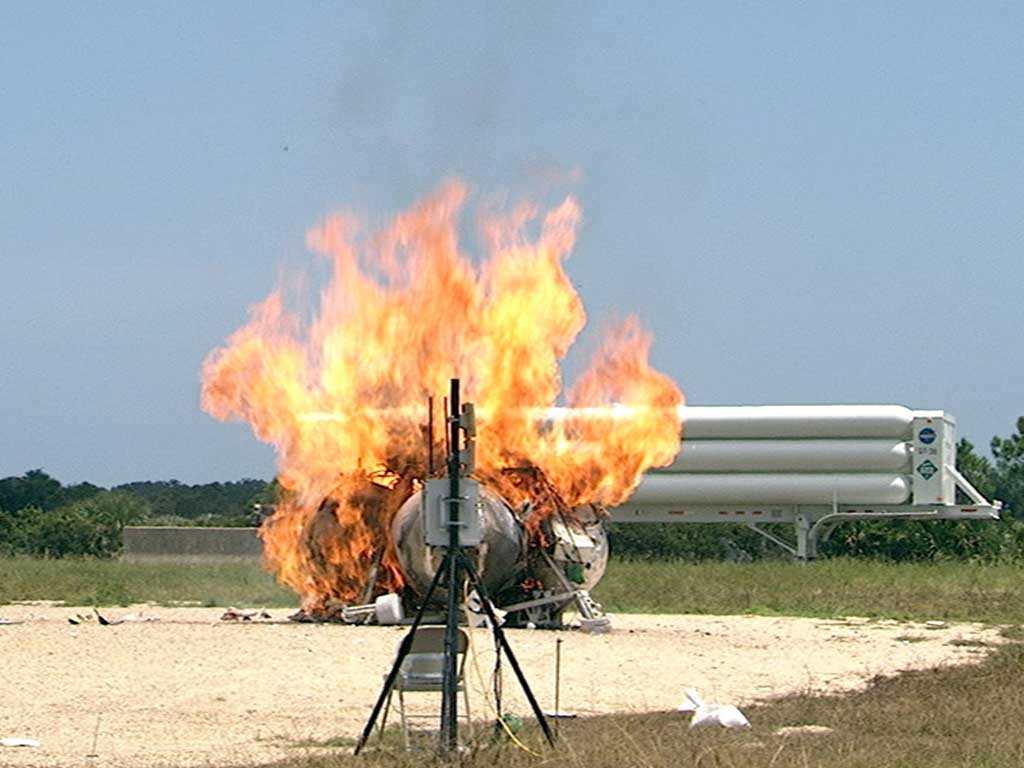Nasa's Morpheus lander in fiery crash at Cape Canaveral

Your support helps us to tell the story
From reproductive rights to climate change to Big Tech, The Independent is on the ground when the story is developing. Whether it's investigating the financials of Elon Musk's pro-Trump PAC or producing our latest documentary, 'The A Word', which shines a light on the American women fighting for reproductive rights, we know how important it is to parse out the facts from the messaging.
At such a critical moment in US history, we need reporters on the ground. Your donation allows us to keep sending journalists to speak to both sides of the story.
The Independent is trusted by Americans across the entire political spectrum. And unlike many other quality news outlets, we choose not to lock Americans out of our reporting and analysis with paywalls. We believe quality journalism should be available to everyone, paid for by those who can afford it.
Your support makes all the difference.A small Nasa lander being tested for missions to the moon and other destinations beyond Earth crashed and burned after veering off course during a trial run at the Kennedy Space Centre yesterday, officials with the US space agency said.
There were no injuries after the prototype, known as Morpheus, burst into flames near the runway formerly used by Nasa's space shuttles.
The insect-like vehicle, designed and built by engineers at Nasa's Johnson Space Centre in Houston, had made several flights attached to a crane before yesterday's attempted free-flight.
Morpheus' engines, which burn liquid oxygen and methane, appeared to ignite as planned, lifting the 1,750-pound vehicle into the air. But a few seconds later, Morpheus rolled over on its side and plummeted to the ground.
Nasa video showed the vehicle engulfed in flames and then rocked by a spectacular explosion, presumably due to the fuel tanks rupturing.
"Failures such as these were anticipated prior to the test, and are part of the development process for any complex spaceflight hardware," Nasa said in a statement.
An investigation is under way, the statement added.
Project Morpheus began in partnership with privately owned Armadillo Aerospace, which is developing re-usable, suborbital vehicles that take off and land vertically.
Nasa, which has spent about $7 million on the project over the past 2.5 years, is interested in developing technologies that could be used to fly cargo to the moon and other future missions beyond Earth orbit.
Project Morpheus was an example of what the former project manager called "Home Depot engineering" - low-budget projects that use existing resources and partner with non-traditional aerospace companies.
"The Morpheus lander is kind of our poster child. It's one of our first attempts to do these kinds of projects," former project manager Matt Ondler said in an interview with Reuters last year.
"Instead of building some elaborate test structure, you go to Home Depot and build something very quickly that gets you 80 per cent of the answer and allows you to keep moving forward," he said.
Morpheus arrived at Florida's seaside space centre in July for three months of increasingly rigorous test flights, including automated landings in a mock moonscape, complete with craters and boulders.
The lander was designed to deliver about 1,100 pounds of cargo to the moon, Nasa said on its Project Morpheus website.
Technologies being developed include a propulsion system that uses liquid oxygen and methane - green fuels that could be manufactured on other planetary bodies, Nasa said.
The accident happened as Nasa scientists were still hailing the Mars rover Curiosity's descent and landing on the Red Planet earlier this week as a "miracle of engineering."
Reuters
Join our commenting forum
Join thought-provoking conversations, follow other Independent readers and see their replies
Comments